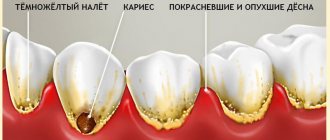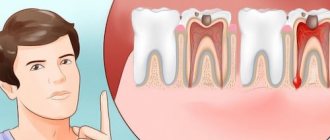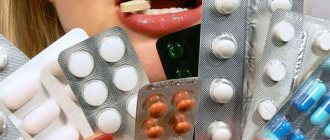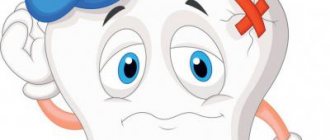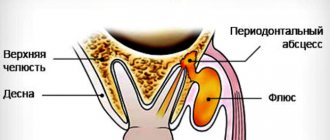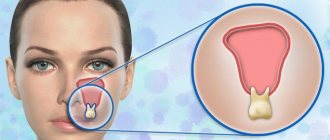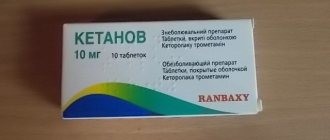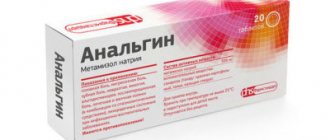Destruction of the tissues that form the crown and root parts of the tooth invariably leads to discomfort, and in more advanced cases – to acute, throbbing or nagging pain. In dentistry, toothache has a special definition – dentalgia or odontalgia. Often the cause of pain can be gum disease, jaw problems, or injuries. Unfortunately, it is not always possible to get an appointment with a dentist at the first signs of discomfort, so you can use tablets for toothache to relieve symptoms and improve your well-being.
It is important to understand that not a single tablet can eliminate the cause of toothache. The only way to cope with dentalgia for a long time is to consult a dentist for therapeutic or surgical treatment.
The choice of a particular treatment method depends on the complexity of the problem and the stage of its development.
By clicking the “request a call” button you agree to the personal data processing policy.
Modern pharmacology offers a wide range of effective drugs that can reduce discomfort caused by progressive dental diseases or injuries. Today, you can buy a variety of medications for toothache in pharmacies. Conventionally, they can be divided into 3 groups:
- NSAIDs (non-steroidal anti-inflammatory drugs)
. As a rule, the source of toothache is an inflammatory process. NSAIDs don't just relieve pain - they relieve inflammation, thereby reducing pain. - Analgesics.
They do not affect the course of the inflammatory process - they eliminate the source of pain by affecting the nerve endings and pain centers in the brain. - Local painkillers
. These are drugs such as lidocaine and novocaine. As a rule, these products are produced in the form of injections, but you can find small aerosol cans with lidocaine on sale - one press and the pain goes away for 30-40 minutes. The main disadvantage of local anesthetics is their strong effect on nearby tissues, which can result in a “cotton tongue” effect, temporary loss of skin sensitivity at the site of exposure, and lack of taste sensations.
As a rule, tablets are the most popular - they are easy to use, and if you choose the right drug, you can use them not only to relieve toothache, but also as an antipyretic, a medicine for migraines, joint pain, etc.
Other medications for toothache
In addition to tablets and capsules, the pharmaceutical industry offers a lot of other drug options that help in the fight against dentalgia:
- Gels.
They are most often used in children during teething. Moreover, such remedies also have an effect in adults during the eruption of wisdom teeth. Among the most popular drugs of this kind are ointments and gels “Cholisal”, “Solcoseryl”, “Dentol”, “Kamistad”, “Metrogil Denta”. - Dental drops.
These are safe, natural preparations made on the basis of natural ingredients, extracts, and essential oils. They have a local anti-inflammatory, calming and analgesic effect. Popular drops - “Dentaguttal”, “Dentinox”, “Dantinorm”, “Denta” - Injections.
These may be conventional drugs for intramuscular administration (Ketonal, Ketorol, Diclofenac), or they may be drugs for point application. Most often, injections are used by professionals for strong pain relief before tooth extraction or treatment (Ultracain, Septodont). - Antibiotics.
It is important to understand here that if a tooth hurts due to the development of caries or pulpitis, then antibiotics are useless (after all, they do not have any effect on the exposed nerve). But if there is a suspicion of the formation of an abscess under the root (obvious inflammation), then it makes sense to take a course of antibiotics (amoxicillin, clindomycin, metronidazole, chloramphenicol, biseptol) for maximum resorption of the accumulated pus. Of course, immediately after this you need to go to your doctor and eliminate the root cause of the pain (treat or remove the tooth). Antibiotics are available in the form of tablets, ointments, and injections. - Sprays and aerosols.
These medications have a local anesthetic effect; simply put, they freeze the tooth. The most popular is Ledocaine spray.
Folk remedies:
- Rinses
Most often, a saline or soda solution is used (1 teaspoon per glass of water), to which you can add a couple of drops of iodine. You can rinse a sore tooth when the first pain appears. - A decoction of sage, chamomile, and St. John's wort for rinsing is also recommended. It is quite simple to prepare: pour boiling water over 1 teaspoon of any of the above herbs, hold in a water bath for 15-20 minutes, strain and cool slightly. Rinsing is carried out as needed to relieve pain with a warm decoction.
- Cooling
. For local anesthesia, you can temporarily apply a piece of ice or something cold to the painful tooth (or rather, to the cheek on the painful side). As a rule, the effect occurs quickly, but does not last long. The main disadvantage of this method is that after applying ice, the pain may disappear for a while, and then return with renewed vigor. - Garlic applications
. Oddly enough, you need to apply garlic not to the tooth, but to the hand (in the place where the pulse is usually felt). The garlic is cut into small cubes or pressed through the garlic, a piece of bandage is placed on the wrist (if this is not done, there is a high risk of a chemical burn from contact of garlic juice with the skin), folded in half or three times, garlic is laid on the bandage, covered with two or three layers of bandage on top. and secure the application. If you have a toothache on the right side, then apply the garlic to your left hand and vice versa.
You can find even more traditional methods in this article.
When a person starts to have a toothache, he is ready to use any means to make it end as soon as possible. Some patients, in the fight against dentalgia, use homeopathic remedies, which, in theory, are designed to cope with the disease. In fact, this makes very little sense: toothache is not a disease, but a symptom of it that needs to be quickly relieved. Homeopathic medicines are intended for long-term treatment, so instead of wasting time and money on useless medicines, it is better to take a tablet of a good painkiller and see a dentist as soon as possible.
Why does a dead tooth hurt?
If you have a dead (pulpless) tooth immediately after the anesthetic wears off, this is normal. Pain of moderate to severe intensity can last from 1 to 4 days after removal of the nerve. Unpleasant symptoms can be relieved by taking a painkiller tablet. A competent doctor immediately warns the patient about possible pain and immediately recommends medications. As a rule, this is analgin, ibuprofen, ketorol.
Another reason is the severe stage of periodontitis, causing purulent tissue lesions. Painkillers help only temporarily, you will have to go to the doctor. But this situation also arises in the absence of hygiene and neglect of the disease.
In all other cases, pain in a dead tooth is a pathology caused by incomplete removal of the nerve, poor cleaning of the canals and errors associated with filling. It may manifest itself slightly when biting and pressing, or it may be an immediate shooting localized pain. In some cases, it occurs after a person is very cold or has a cold.
Important! There is only one way out - the sooner you get to the doctor, the better for you. To survive the time “before the doctor”, you can apply a cold object to your cheek. Tablets do not help much in this situation.
What to do if the pills don't help?
It often happens that even after taking strong painkillers, toothache does not subside. This happens for many reasons: advanced caries, pulpitis, severe destruction of the crown, abscess on the root (by the way, practice shows that in this case even local anesthetic injections such as Ultracaine are ineffective). In addition, do not forget about individuality - there are people who are simply not susceptible to the effects of drugs. Also, drugs that affect the nervous system and brain pain centers may not be effective in patients who are in a constant state of stress.
If no pharmaceuticals or folk remedies help, you should not look for a magic pill - you must urgently go to a dental clinic for qualified help.
If your tooth hurts after nerve removal
Even several hours after removal of the nerve, pain may be felt in the damaged tooth - when pressing, when biting, or slightly throbbing. This is a normal reaction of the body to intervention.
What to do:
- Take one or two tablets of any painkiller - analgin, baralgin, tempalgin, pentalgin, dexalgin, paracetamol, nise.
- You can carefully anoint the gums with one of the gels - Cholisal, Metrogyl Denta, Kamistad, Solcoseryl.
If the pain does not subside or even intensifies, you will have to return to the doctor.
How often can you take painkillers?
Whatever the cause of toothache, you should never abuse painkillers:
There is no universal recipe for taking painkillers for toothache. Each drug is accompanied by instructions that clearly describe the dosage and method of use depending on the nature of the pain, age, weight of the patient, etc.
If we summarize all the recommendations, we can say that taking more than 3-4 tablets a day is not recommended (while strong tablets, such as Nise or Ketanov, it is generally better to take no more than 2 times a day).
Weaker drugs can be taken in larger dosages (1-2 tablets at a time, 3-4 times a day). But, again, if the pain is severe and you have to swallow 8 Paracetamol tablets to cope with it, it is better to take 1-2 tablets of Aertal or Nurofen - the effect will be approximately the same.
If the tooth is loose and hurts
What to do if the tooth not only hurts, but also becomes loose - we try to relieve the pain using any of the listed methods (tablets, gels, rinsing, folk remedies). And we are planning a visit to the doctor. Perhaps carious processes have begun with simultaneous loosening of the tissues around the tooth. If you get there in time, he can be saved. Similar manifestations are possible with periodontitis, periodontal disease, and gingivitis.
Be careful. When carrying out manipulations, try to be extremely careful to prevent further loosening.
Depending on the diagnosis, the doctor will prescribe treatment, including antibiotics, vitamin therapy, and physiotherapy.
Pregnancy pills
Pregnancy is the period when a woman should treat herself with the most care and carefully monitor her health - because the condition of her unborn baby directly depends on this. Therefore, even at the planning stage of pregnancy or at its earliest stages, it is necessary to solve all existing problems in the oral cavity. If for some reason this was not possible, you should prepare for the fact that coping with the resulting toothache will be very problematic:
- During pregnancy, and especially in the first and third trimester, it is prohibited to take any highly effective painkillers (it has been scientifically proven that active substances can penetrate the placenta, causing harm to the unformed body of the unborn baby).
- Hormonal changes that invariably accompany the process of bearing a child can lead to the most unexpected consequences - from unexpected destruction of enamel and gum disease to the manifestation of complete immunity to medications.
That is why, among the drugs approved for pregnant women, doctors name only Paracetamol, Nurofen (in the 1st and 2nd trimester), Analgin (in the 2nd trimester), Airtal (in the 1st and 2nd trimester). All of the above drugs can be used in moderation - 1 tablet per day for no more than 5 days in a row.
Severe toothache in pregnant women is best relieved with safe folk remedies (gargle, ice, garlic).
All of the above also applies to the lactation period. At this time, it is advisable to reduce the intake of any medications to zero, since after absorption into the blood they enter the body of the newborn.
Do not ignore preventive visits to the dentist.
It is enough to visit a specialist 1 – 2 times a year, which will allow you to promptly identify any dental problem at an early stage of development. This means that its elimination will be quick, easy and without complications.
By clicking the “request a call” button you agree to the personal data processing policy.
How to strengthen teeth enamel at home
Home restoration of tooth enamel can be combined with a professional one, but it can be carried out more often than dental procedures. An integrated approach is encouraged, which takes into account three main areas:
- The right diet.
- The use of folk remedies.
- Use of special means.
Only in isolated cases can one of the three listed methods be effective. But strict adherence to the recommendations in all areas is guaranteed to lead to the desired result.
Proper diet
In this case, diet is not an entirely correct concept, since strengthening and restoring tooth enamel will require not a temporary change in eating habits, but a permanent one. That is, it is necessary to adjust the diet so that it necessarily and regularly includes foods that help strengthen the enamel layer:
- seafood;
- egg yolk;
- fermented milk products (natural, without added sugar);
- nuts;
- greenery;
- fatty river and sea fish;
- rice and buckwheat;
- fruits (in particular mango and tangerine);
- celery;
- mushrooms;
- legumes (without hot sauce);
- red meat;
- liver.
The listed products are replete with easily digestible microelements (fluorine, calcium, phosphorus) and vitamins (C, D and B6), which naturally can do everything so that you no longer wonder how to strengthen tooth enamel.
Please note that the diet should consist not only of boiled, baked or steamed vegetables, but also raw ones. In their natural form, they help create an alkaline environment in the mouth, which is harmful to cariogenic bacteria.
Folk remedies
When discussing with your dentist how to strengthen your teeth enamel, be prepared for him to offer you some proven and effective traditional methods. For example:
- rinsing
: with a solution of soda (1 tsp per glass of warm water); - propolis solution with the addition of calamus extract (suitable for daily use; effectiveness depends on regularity);
- a decoction of sage, chamomile and oak bark (not only strengthens the enamel, but also restores the microflora of the oral cavity, stopping inflammation of the mucous membrane).
:
- you need to make a solution (4 tablespoons per 1 glass of water) and, using a soft brush, use it for regular brushing of your teeth;
(beeswax or propolis balls) used after meals for:
- normalization of salivation;
It is very important to understand that maximum effectiveness from traditional methods can only be achieved with prevention or with minor (weak) damage to the enamel. More often they are used as an addition to the main treatment prescribed by the dentist.
Special means
Special products that are commercially available can be both a panacea in case of enamel destruction and a drug that will only aggravate the problem. The fact is that none of the special compounds can be used without a doctor’s prescription, since it will not bring the desired effect, but can only harm, not only the teeth, but also health in general.
As prescribed by your dentist, you can use:
- Pastes
: Calcined and fluorinated. Fluoride-enriched pastes are contraindicated if there is inflammation in the oral cavity. - With theobromine. Composition based on cocoa beans. Promotes natural regeneration of hydroxyapatite in enamel.
- With amorphous calcium phosphate. By contacting with saliva and hydroxyapatite, the active substance promotes the formation of a protective barrier on the tooth surface. It protects against exposure to aggressive environments and accelerates the remineralization process.
. Convenient for those cases when it is necessary to apply an antiseptic to the gums and teeth (for a relatively long time). Used for home remineralization. There are several types, for example:
- with active components in the form of calcium and phosphorus ions (penetrate into damaged areas of enamel, filling them and effectively restoring the integrity of the tooth coating)
Knowing how to restore tooth enamel using special means, do not rush to self-medicate. In some cases, formulations with a specific active substance may simply not be suitable for your clinical case. One consultation with a specialist will be enough to find out which paste, cream or gel is best for you.
Tablets for children
As you know, most of all tablets recommended for adults are absolutely contraindicated for children. It is for this reason that it is better not to take risks and choose drugs that are appropriate for the child’s age. Today in pharmacies you can find a huge selection of gels, ointments, analgesic syrups, rectal suppositories that will help cope with childhood dentalgia:
- Cholisal-gel.
- Dentinox gel.
- Children's Nurofen (drops, syrup, tablets)
- Panadol rectal suppositories
- Viburkol rectal suppositories.
The instructions for use in the above-mentioned drugs and their analogues often contain an age limit - from 6 or 12 years. However, on the recommendation of a doctor and in the presence of acute pain, it is permissible to give these medications to children under 6 years of age.
As in the case of pregnant women, children are recommended to use folk remedies to eliminate dentalgia - rinsing, cooling, garlic.
Main causes of pain
There can be many reasons why a tooth hurts, but the most obvious of them are the following:
- Caries
. Even almost imperceptible damage to tooth enamel can lead to periodic, barely noticeable pain. If you do not see a doctor in time, the hole will grow, and with it the pain will intensify. After caries reaches its final stage, painful sensations will appear when eating, when cold air enters the oral cavity, etc. - Pulpitis
. Damage to the pulp, which contains numerous nerve endings, invariably leads to regular throbbing pain. - Periodontal diseases
. Damage to the soft and bone periodontal tissues leads to severe inflammation and unbearable pain. - Removal of a tooth
. Despite the fact that the operation is performed under local anesthesia, after the anesthetic wears off, the place where the tooth used to be will be very painful. - Eruption of wisdom teeth
. If they grow evenly, then the person feels only discomfort, which is easily relieved with the simplest painkillers. If not everything goes smoothly with teething (the tooth grows crookedly, rests on the root of the neighboring tooth), then special medications will be required to relieve pain.
Obviously, none of the above problems can be solved by taking pills - only a highly qualified specialist can eliminate the source of pain. The pill is just a way to relieve pain for a short time.
About tooth enamel
Research shows that enamel is the hardest tissue in the human body. It does not have the ability to regenerate, that is, after destruction it does not recover on its own. Most often, to solve problems with its destruction, the help of dentists is required, although effective resuscitation methods can be used at home.
Compound
The composition of tooth enamel includes the following substances:
- inorganic (96.5%): calcium phosphate;
- magnesium phosphate;
- calcium carbonate.
- water;
It is worth noting that the enamel of temporary (baby) teeth is less mineralized, so their thickness is half as large (they are more susceptible to caries).
Functions
Enamel covers the entire surface of the tooth crown and protects its hard part (dentin) from damaging factors. Within one crown, the thickness of the enamel word varies:
- thinner - on the cutting edges;
- thicker - on the tubercles of the occlusal surfaces (from the tops of the tubercles to the deep part of the fissure).
As long as the enamel performs its basic functions, a person does not feel discomfort when consuming hot/cold, as well as sweet drinks and food. The appearance of sensitivity to citrus fruits and other products indicates a clear problem with the enamel layer, which needs to be restored and/or strengthened.
You might be interested in:
Restoring tooth enamel
Veneers
Diseases
The most common diseases associated with enamel are:
- erosion;
- demineralization.
Despite the fact that only a few diseases can be identified, the consequences of their untimely treatment can be much greater.
Erosion
The main cause of erosion is:
- regular consumption of foods and drinks containing large amounts of sugar, caffeine and acid;
- bruxism (involuntary grinding of teeth at night);
- taking certain medications.
Signs that you have enamel erosion include factors such as sensitivity to hot/cold, brittle teeth (chips and cracks), and discoloration. This process of destruction does not stop or slow down on its own. To restore, strengthen and preserve teeth, you will have to go to the dentist.
Demineralization
Strictly speaking, demineralization is not so much a disease as a process in which the enamel loses essential beneficial minerals (mostly calcium) - the very components on which its strength and integrity depend. The main causes of demineralization:
- poor nutrition in which the basis of the diet is carbohydrates (they are the main breeding ground for bacteria that destroy enamel);
- insufficient and irregular oral hygiene (this results in the proliferation of bacteria that produce acid, which makes tooth enamel loose).
At the first stages, demineralization is imperceptible. It becomes noticeable after whitish spots appear on the teeth, indicating the beginning of caries. At this stage, it is still possible to prevent serious consequences, for example, by saturating the enamel with minerals to strengthen it and increase its resistance to acids.
Prevention of dental diseases
From a very young age, everyone knows what needs to be done to prevent teeth from hurting:
- Regular oral hygiene. You need to brush your teeth thoroughly, morning and evening, using a good toothpaste and brush. During the day, after each meal, you should rinse your mouth thoroughly, ideally using dental floss.
- Visit the dentist twice a year for preventative care.
- Eliminate any foci of infection in the oral cavity in a timely manner and carry out sanitation in a timely manner.
- Do not neglect modern methods of protecting teeth - fluoridation, remineralization, fissure sealing.
In addition, dental health largely depends on what we eat - the diet should include as many fresh vegetables and fruits, fish, and lean meat as possible; Eliminate sugar and sweets as much as possible. Teeth should be protected from mechanical damage, and do not overuse whitening toothpastes.
Author: Elena Grunina Dentist-therapist, endodontist. Work experience more than 9 years. The information is for reference only. Before treatment, consultation with a doctor is necessary.
Why do my teeth hurt?
The main causes of toothache include:
- Caries.
The initial stage is characterized by the destruction of the upper tooth tissues. The pain occurs periodically or one-time - the tooth reacts to pressure, cold and hot. - Deep caries.
The middle tissues of the tooth are affected, the pain becomes more prolonged, aching or throbbing. - Pulpitis.
The result of untreated caries. A nerve has been hit. The pain is severe and incessant. - Periodontitis.
Inflammation of the tissues around the roots of the teeth. It occurs as a consequence of pulpitis or after erroneous medical procedures. The pain is acute, intense. - Residues of food stuck
between teeth, even healthy ones. First there is a feeling of discomfort, then a pressing pain that can cover the entire jaw. Use dental floss or metal (dental) tape.

